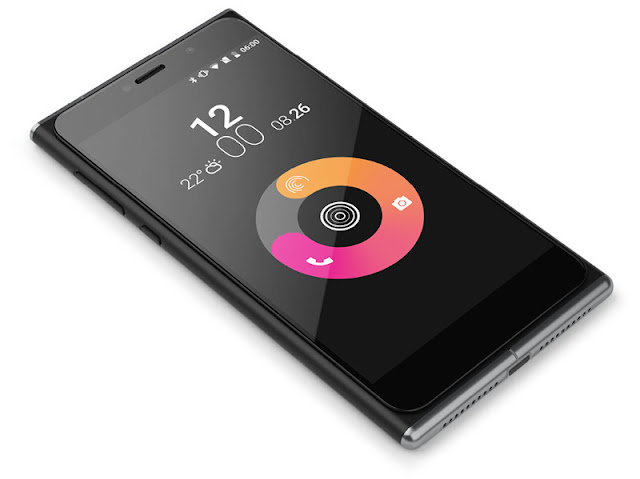The smartphone market is only getting competitive. Each smartphone maker is eyeing to grab a larger share of the ever-growing market by finding new ways of differentiation in its devices. Two recently launched devices
Micromax Yu Yuphoria and
Lava Iris Alfa L are similarly competing to get the attention of customers. Therefore, we have decided to compare the two devices to make it easier for the customers who may be considering either of the two devices.

Micromax Yu Yuphoria (142.38x72.96x8.2mm; weight 143g) is all new pocket friendly device that has a sleek buffed steel body and is available in back colour and champagne gold with white colour. It has a full HD 5 inch display screen with Corning Gorilla Glass 3 protection and screen resolution of 1280x720. The mobile device spec detail includes 64 bit 1.2 GHz Qualcomm MSM8916 Snapdragon 410 processor that is paired with 2GB RAM and Adreno 306 GPU. It comes with 16 GB in-built storage with the possibility to expand the memory using micro SD card (32GB).
Yu Yuphoria runs on Android Lollipop 5.0.2 based Cyanogen Mod 12 OS and comes with app themer that permit the user to customize the display of the device. It has a 2230mAh battery that offers a Talk Time up to 7 hours which might not sound sufficient for heavy mobile phone users. The Smartphone is 3 times scratch resistant and has a 67 percent screen to body ratio. In the Indian market the device is available at around Rs.7000 and offers a good package deal for any mobile user looking for a good smartphone.
On the other hand, Lava’s newly launched Iris Alfa L is an ‘app’ packed device. With a dual-SIM and FOTA (firmware over the air) support, this Android Lollipop 5.0 based smartphone comes with 1GB RAM, is powered by a 1.3GHz quad-core mediatek processor and has IPS Capacitive Touchscreen. The user of Lava Iris will get 8GB of built-in storage that comes with expandable feature via microSD card (up to 32GB). The battery capacity of the phone is 3000 (mAh) that offers talk time on standard battery of up to 22hrs 6min (2G) and 13hrs 15 min (3G).

Lava Iris Alfa, priced at around Rs.8000 onwards, is for those looking for smartphone with a bigger screen (5.5 inch; resolution- 960x540) and in-built app features. It comes with an offer to download music from Hungama Music app free of worth Rs.2000. Along with this there is Truecaller premium app and the phone is loaded with Adaptxt keyboard app that is compatible with 11 Indian local languages. The smartphone is made for those looking for a phone with larger screen size and longer battery.
Micromax Yu Yuphoria has a 1080p video recording along with an 8MP primary camera with LED flash, Omni vision sensor with f2.2 aperture and 5MP front snapper with 4P lenses, 86 degree wide angle lens and f/2.0 aperture. Lava Iris, on the other hand, has 8MP primary camera LED flash and a 2MP front-facing camera.
Both the smartphones are android devices that support dual SIM and have Bluetooth features. They both have audio connector ranging 3.5 mm. When it comes to connectivity options those looking to buy Lava Iris Alfa L can get features such as 3G, Wi-Fi 802.11 b/g/n, Micro-USB, A-GPS, 3.5mm audio jack, and FM radio. On the other hand, Yu Yuphoria supports all the connectivity the user is expecting from a flagship device such as dual SIM with dual standby, 4G LTE, 3G HSPA+, Bluetooth 4.0, GPS, Wi-Fi 802.11 b/g/n and a lot more.
Lava Iris has built-in application like Google Talk, YouTube, Gmail, Google Search and Google Play. But this phone does not have a FM Radio, a feature that Yu offers to its user. Lava on the other hand supports music formats such as MP3, 3GP, AMR, WAV- Video formats: 3GP, MPEG4, AVI. Yu comes with limited support with music formats such as AAC, AMR, MID, MP3, OGG and WAV.
It can noted that Micromax Yu Yuphoria offers bigger RAM, larger storage, GG3 protection, higher resolution, and more powerful front camera. On the other hand, Lave Iris Alfa L comes with larger display screen, higher battery capacity, and a processor that offers slightly better clock speed. In addition, Lava also packs in many Apps. At the price front, both the devices are almost comparable, with Micromax having slight advantage. In overall terms, we think Micromax Yu Yuphoria has an edge over Lava Iris Alfa L.












































